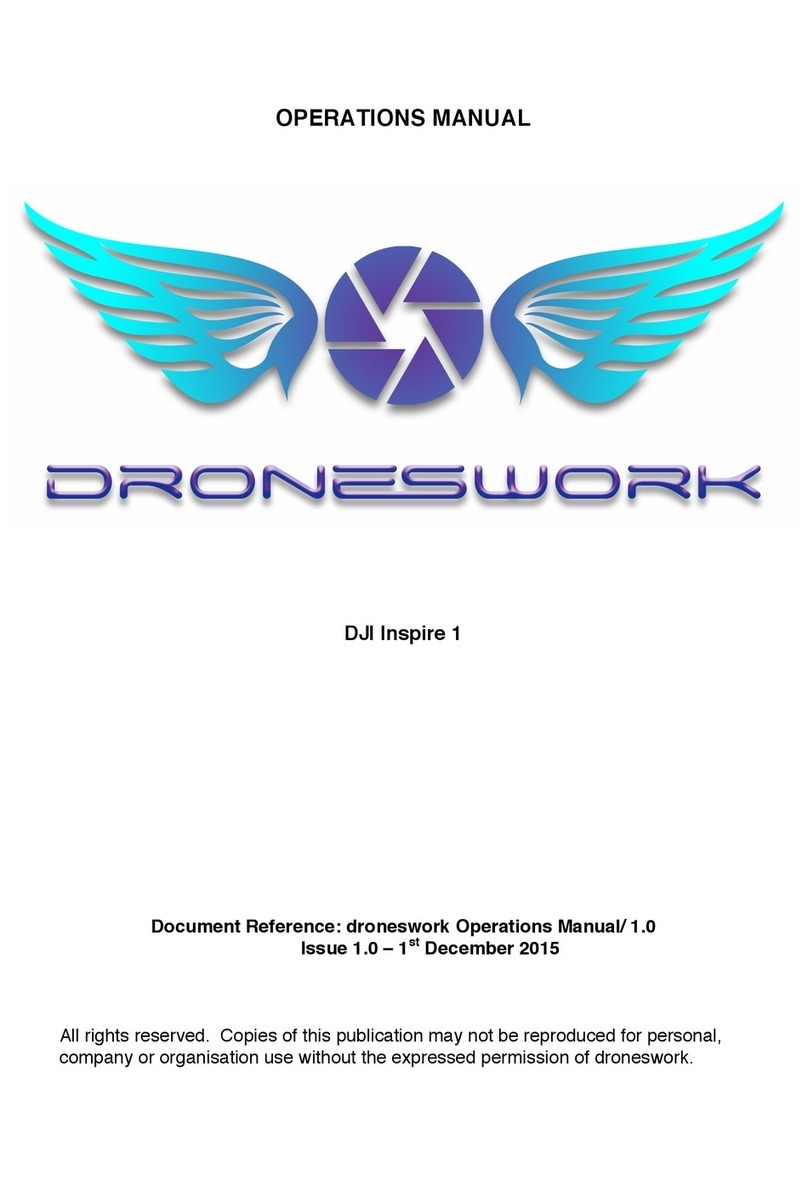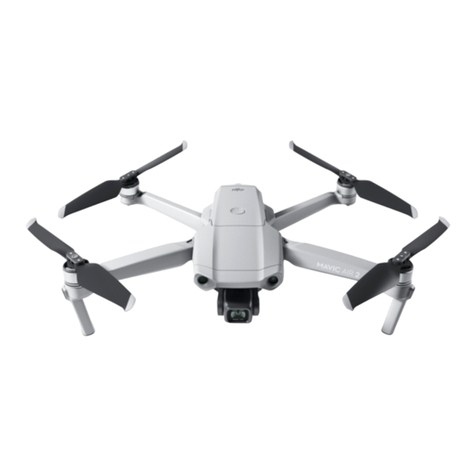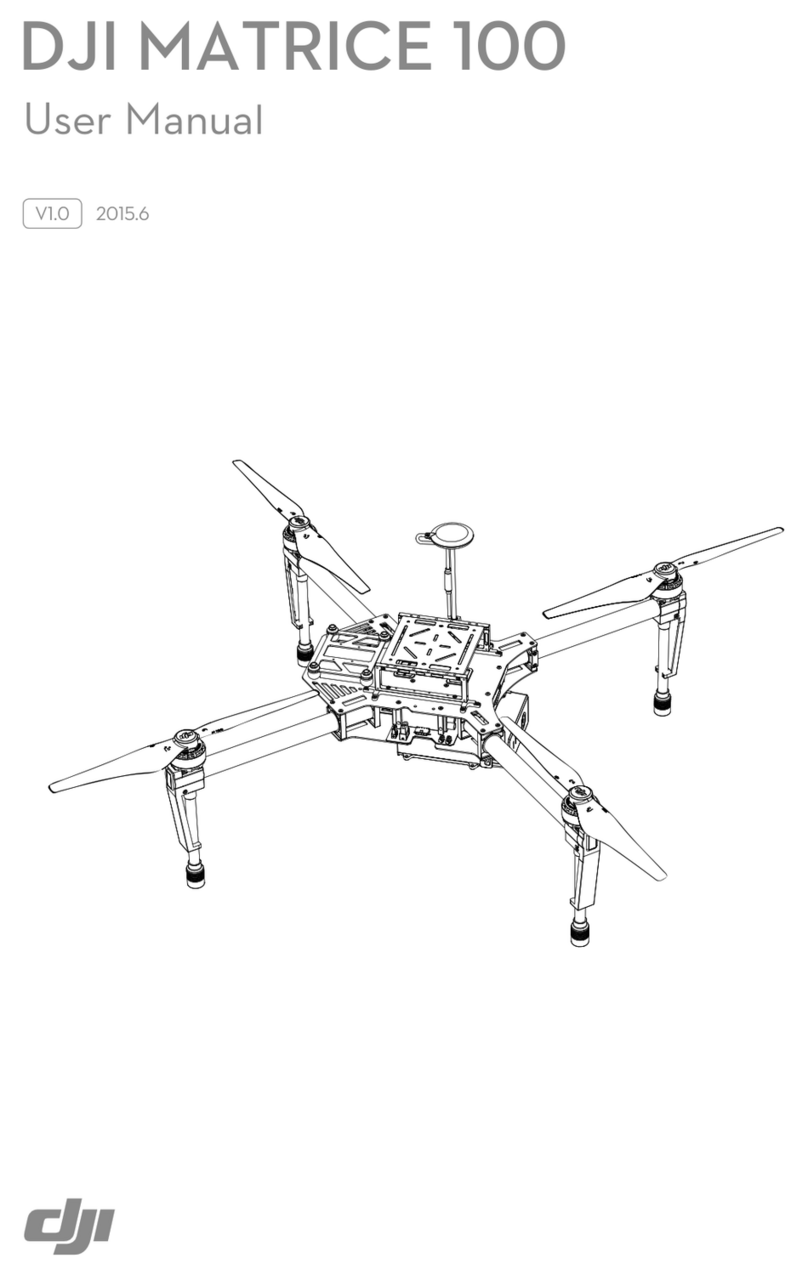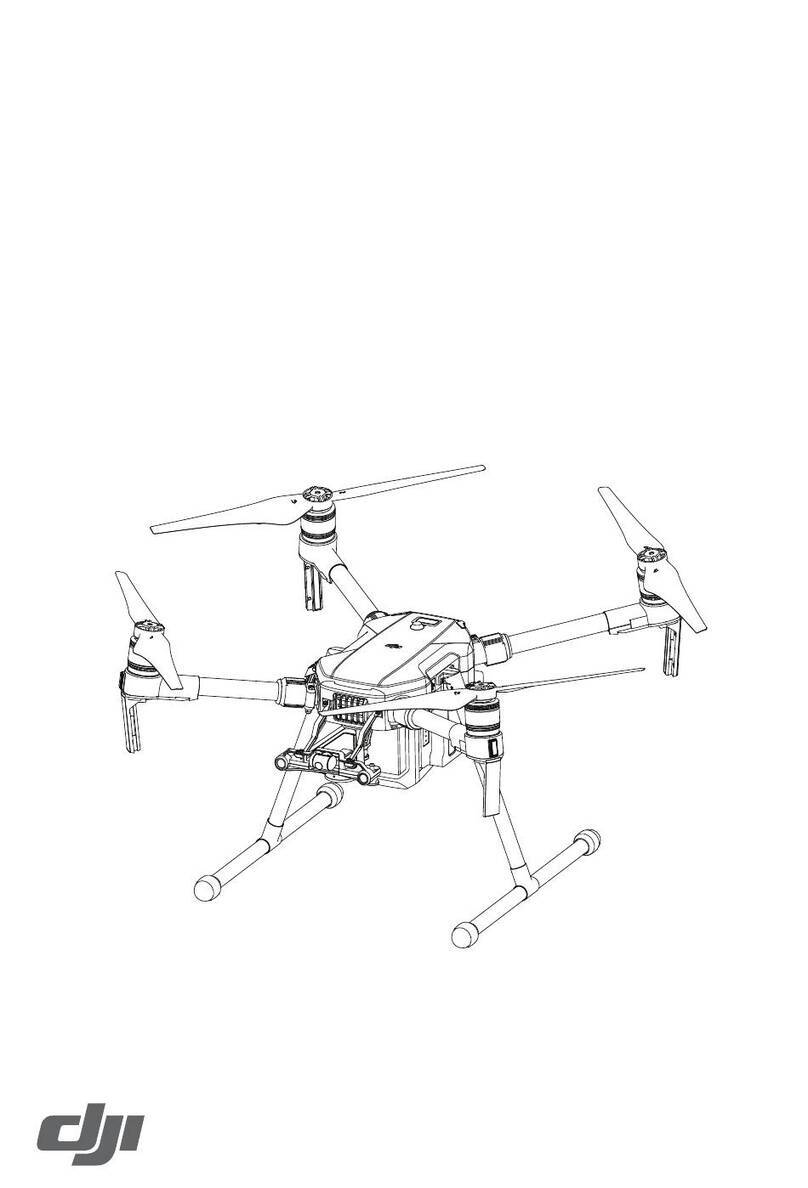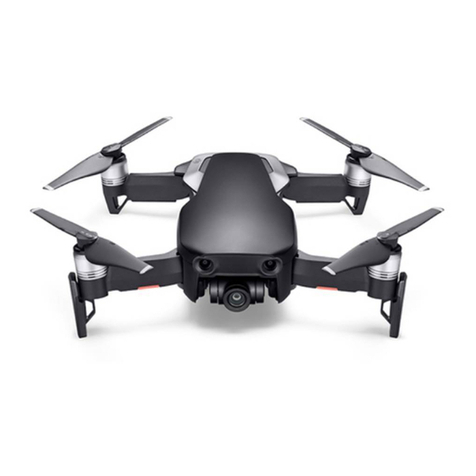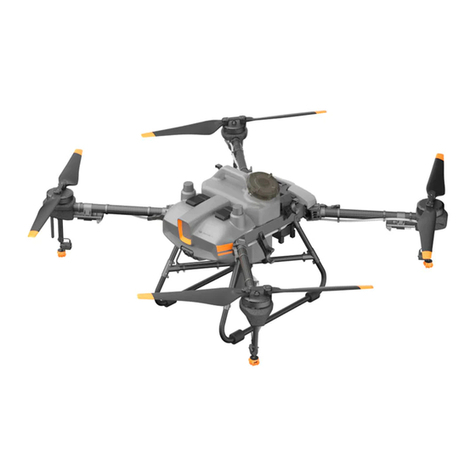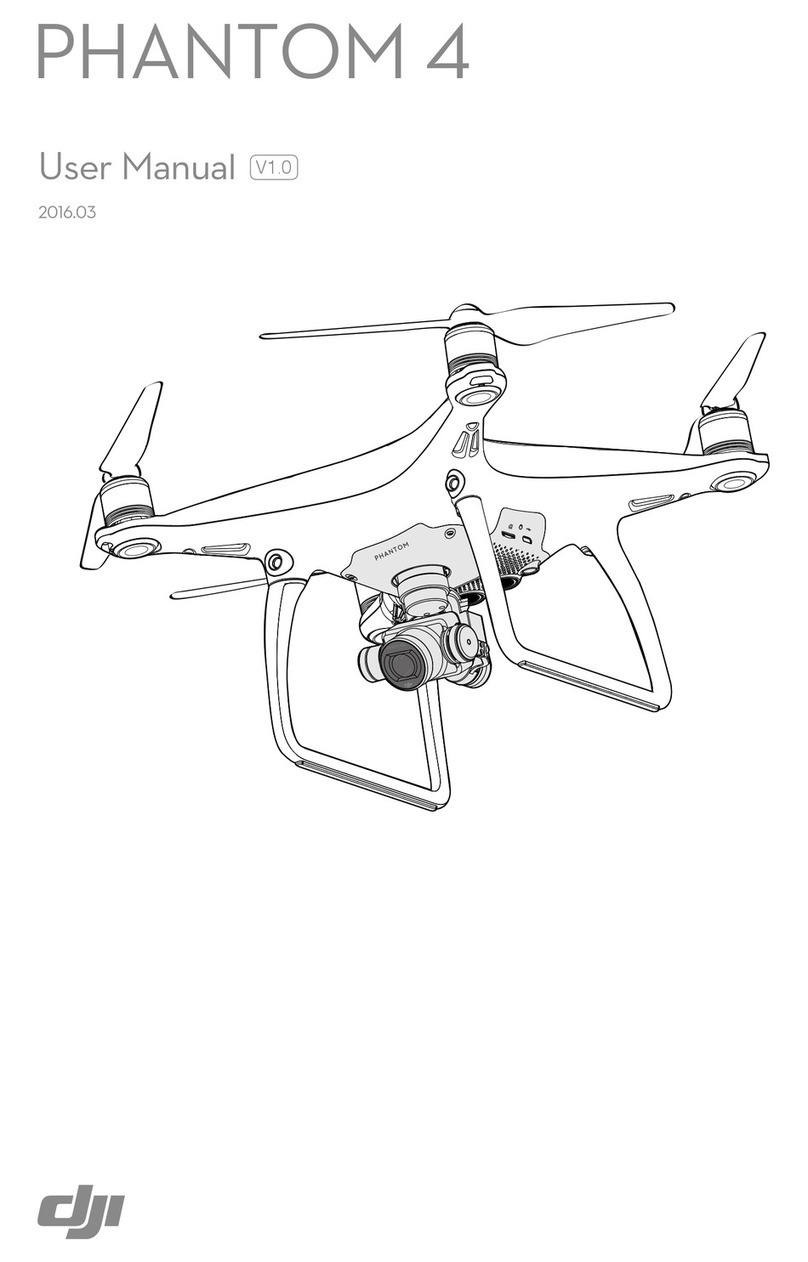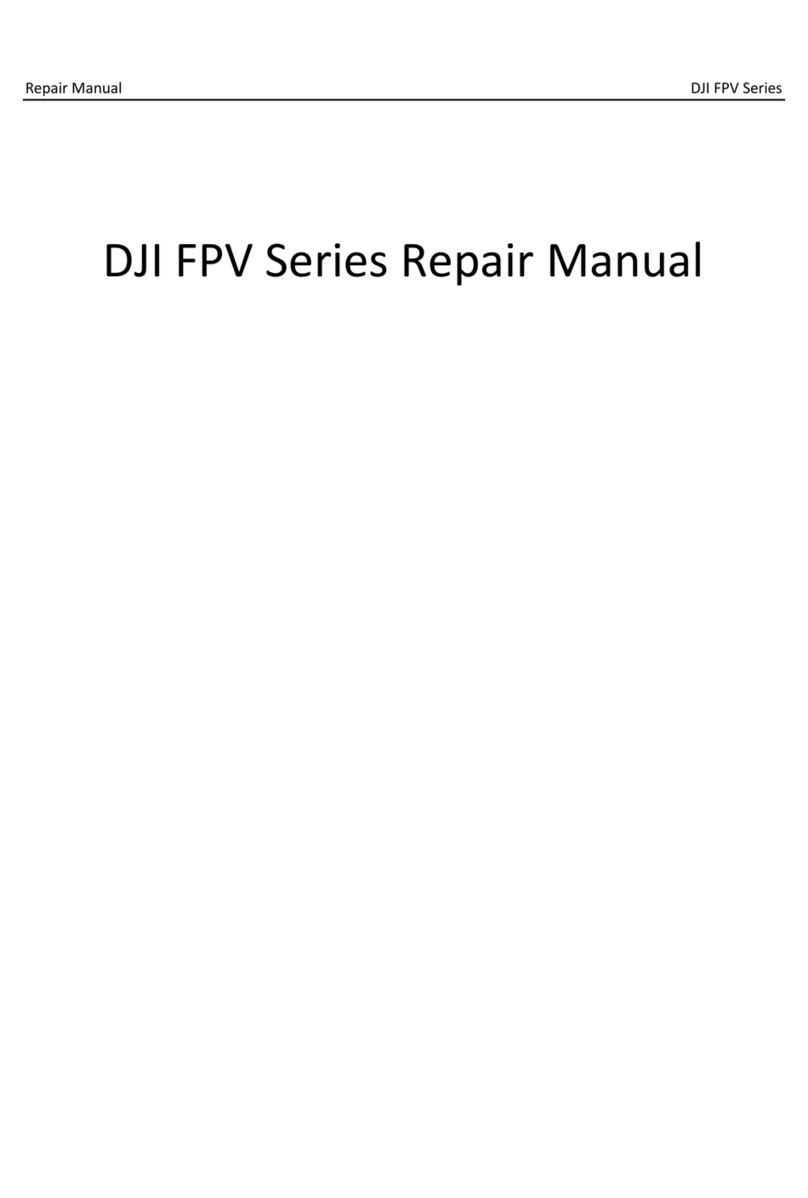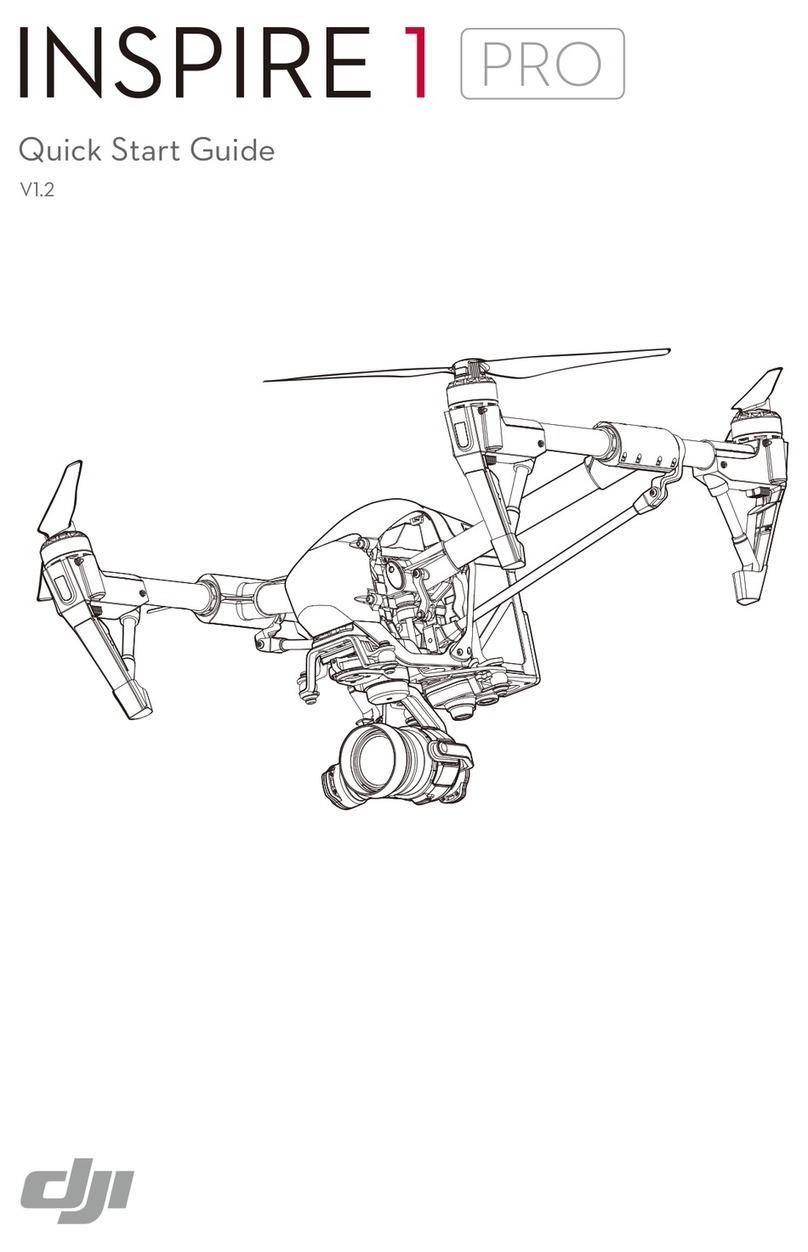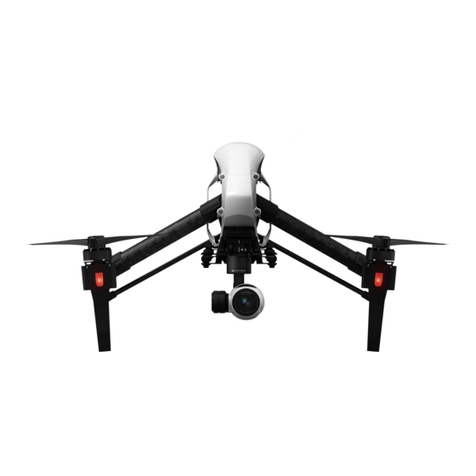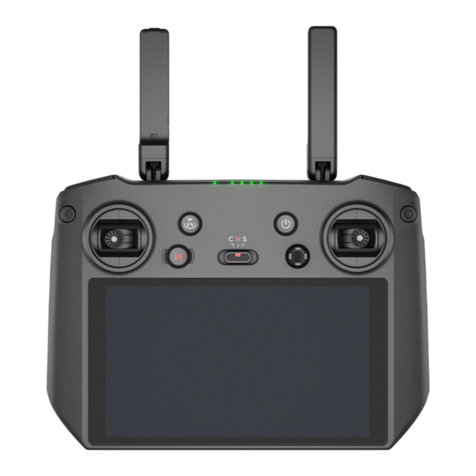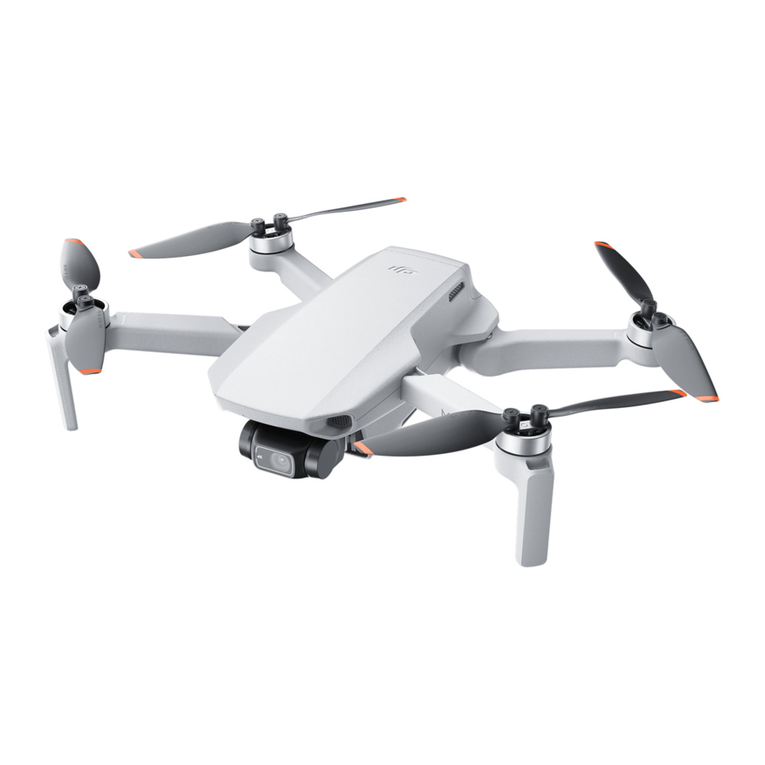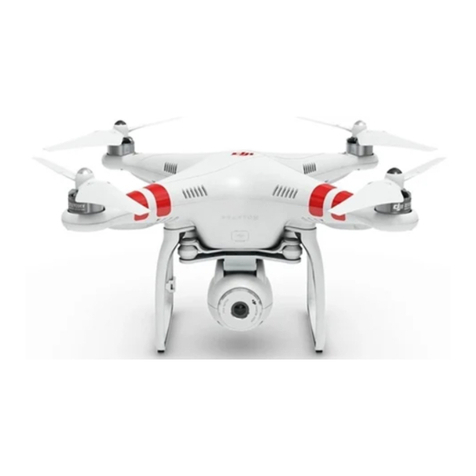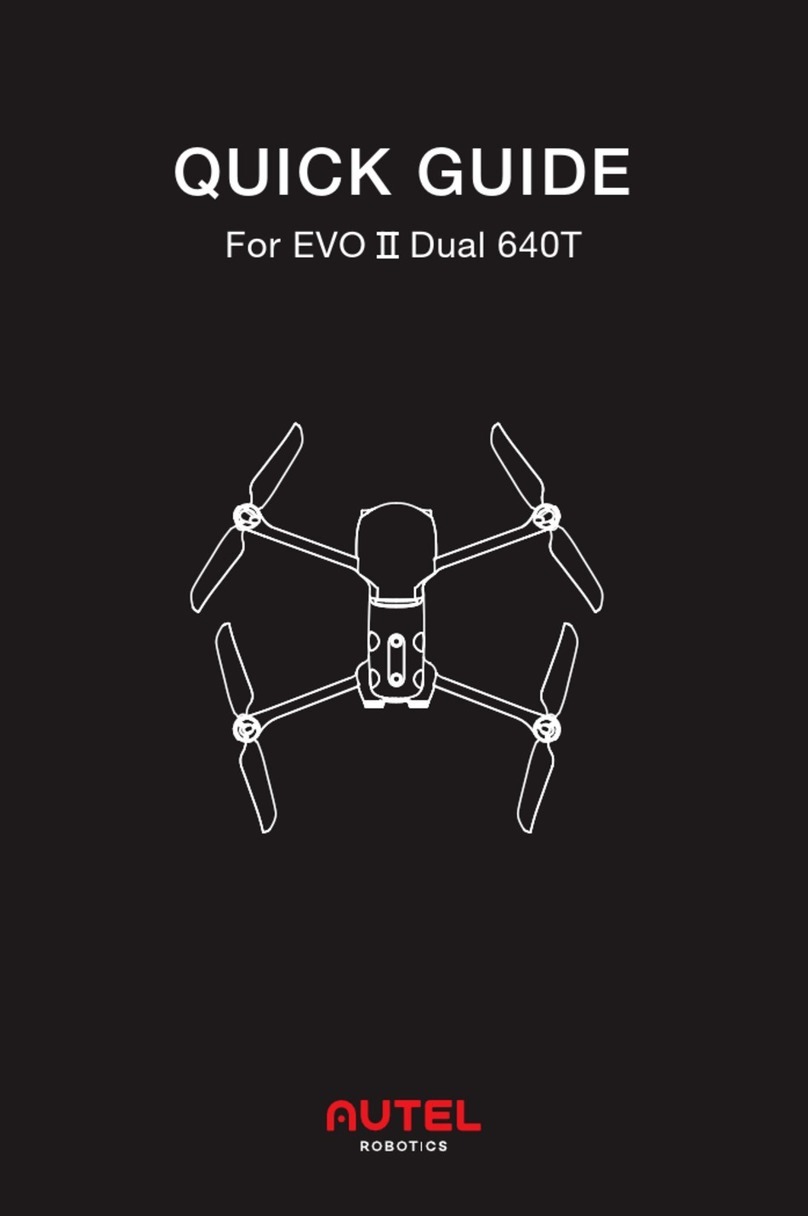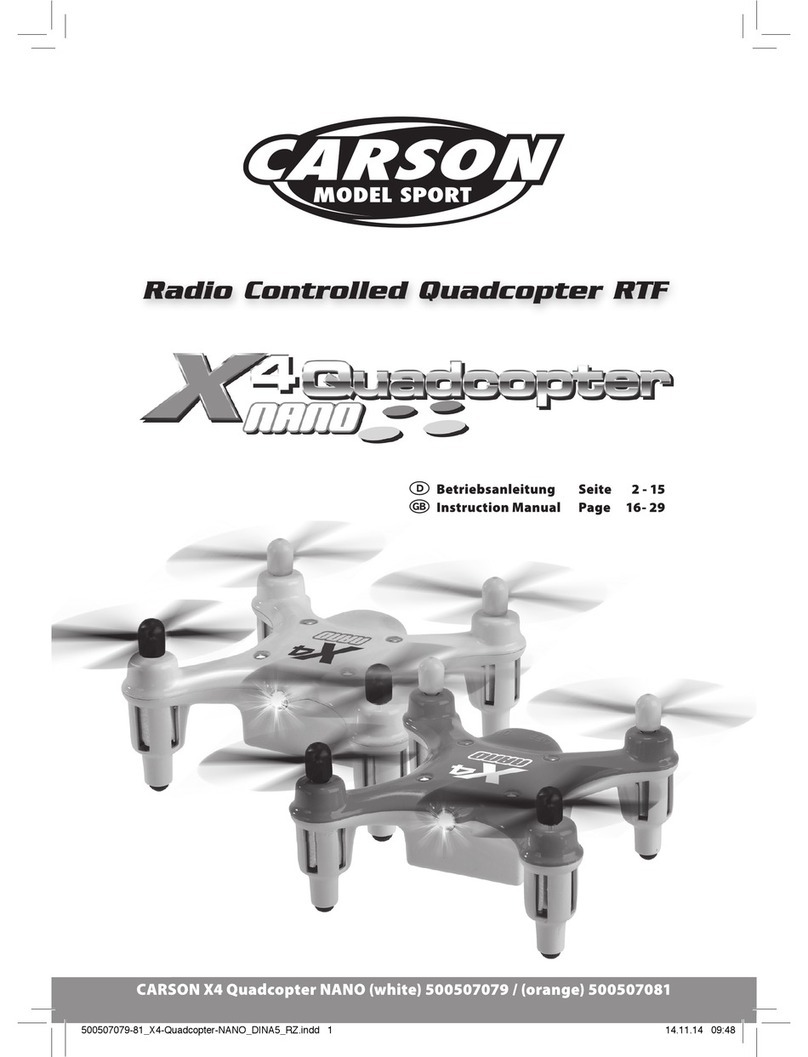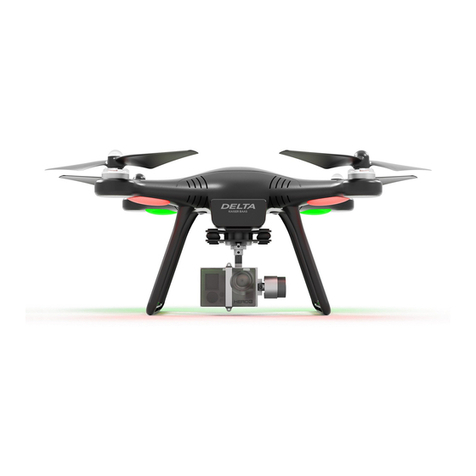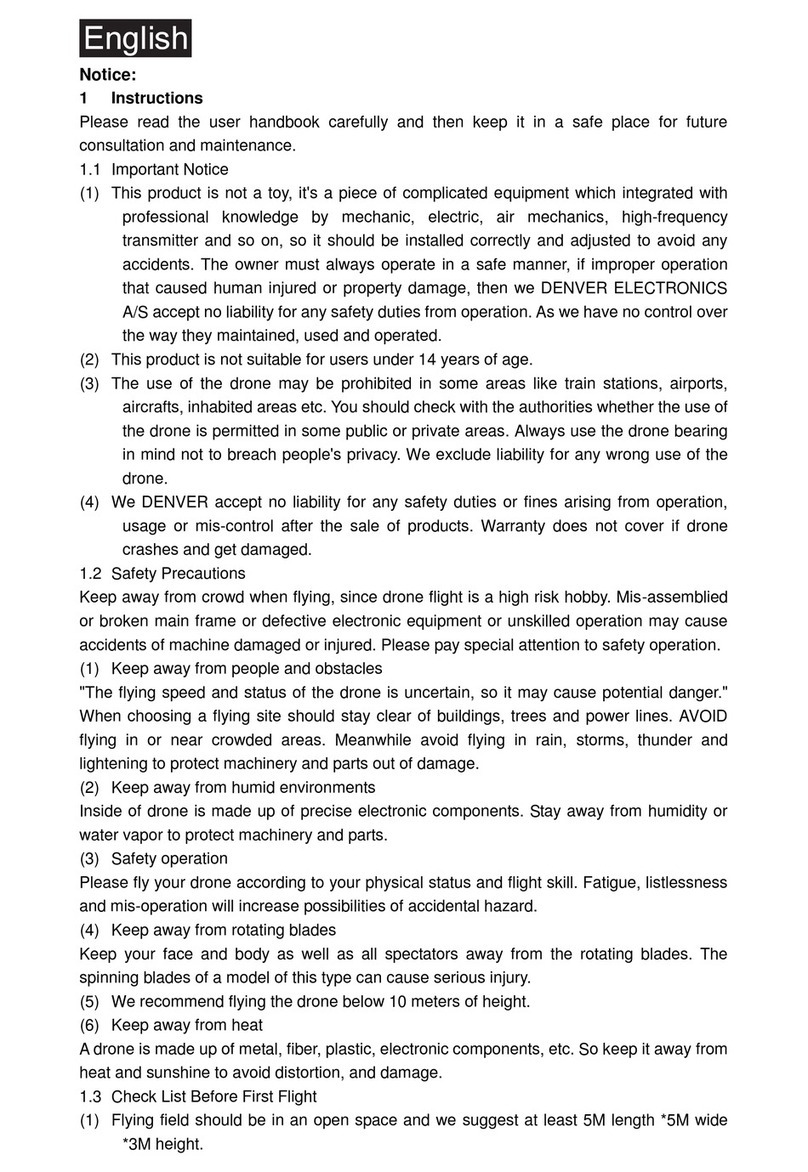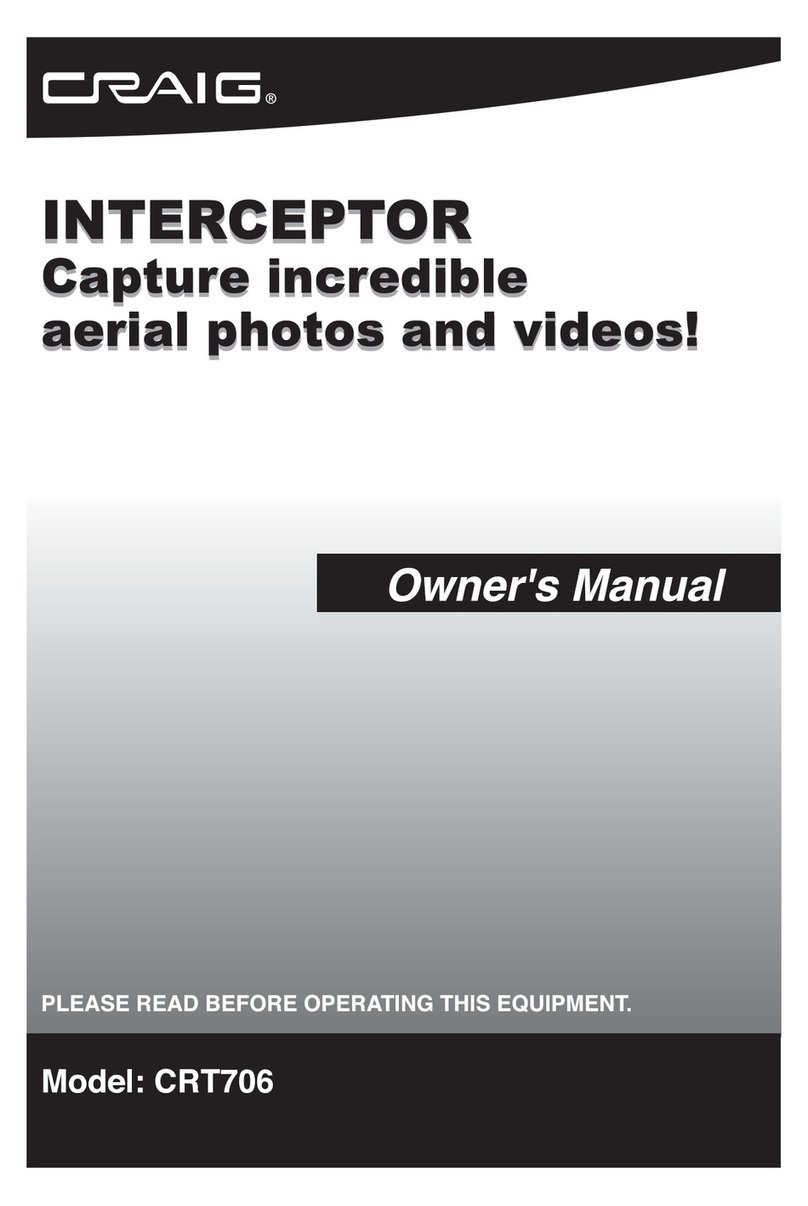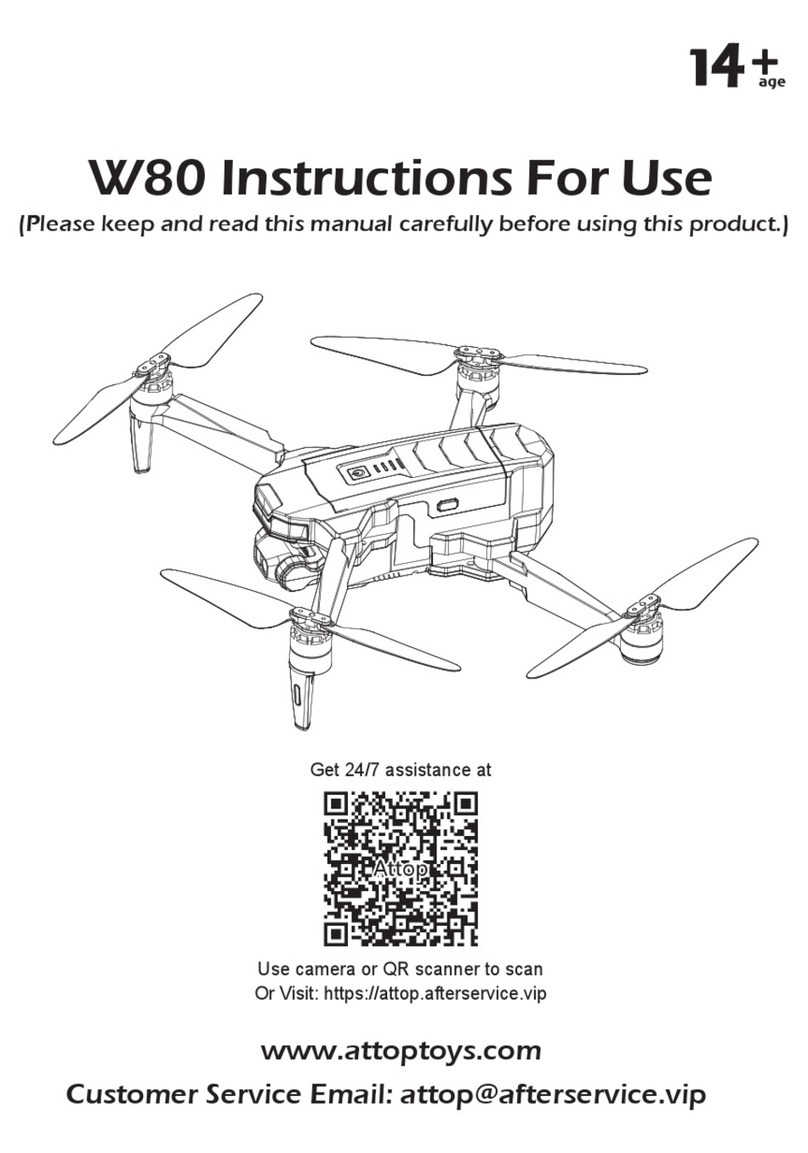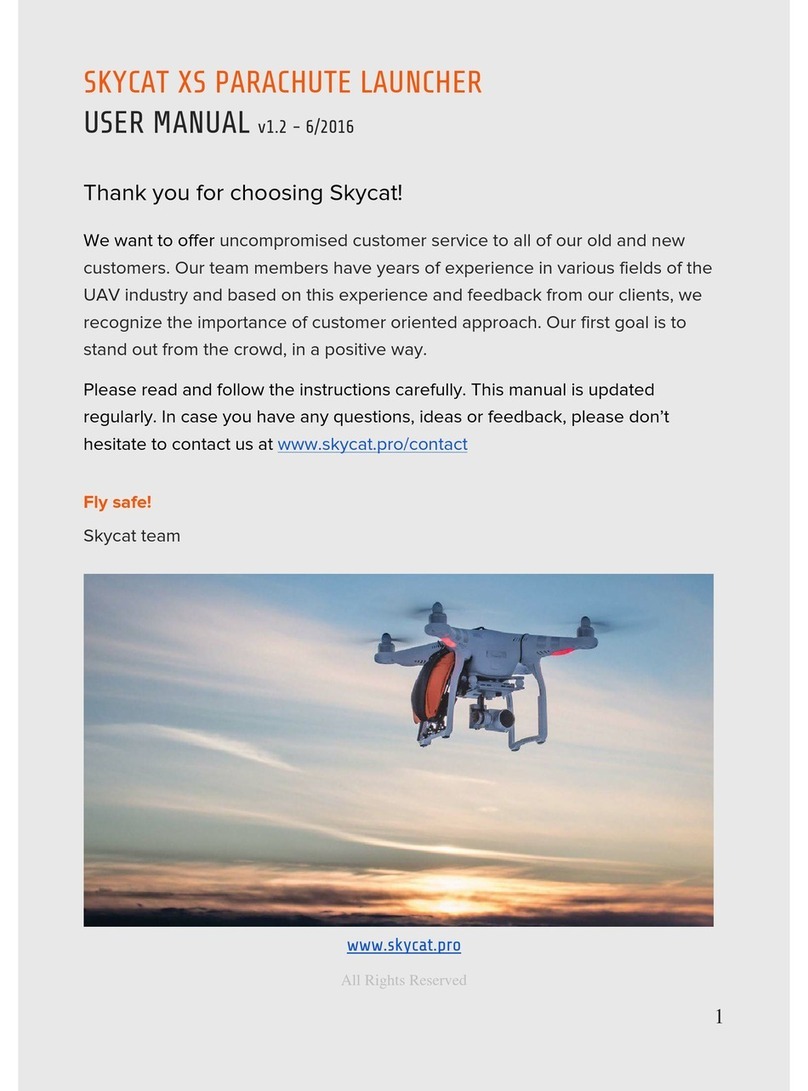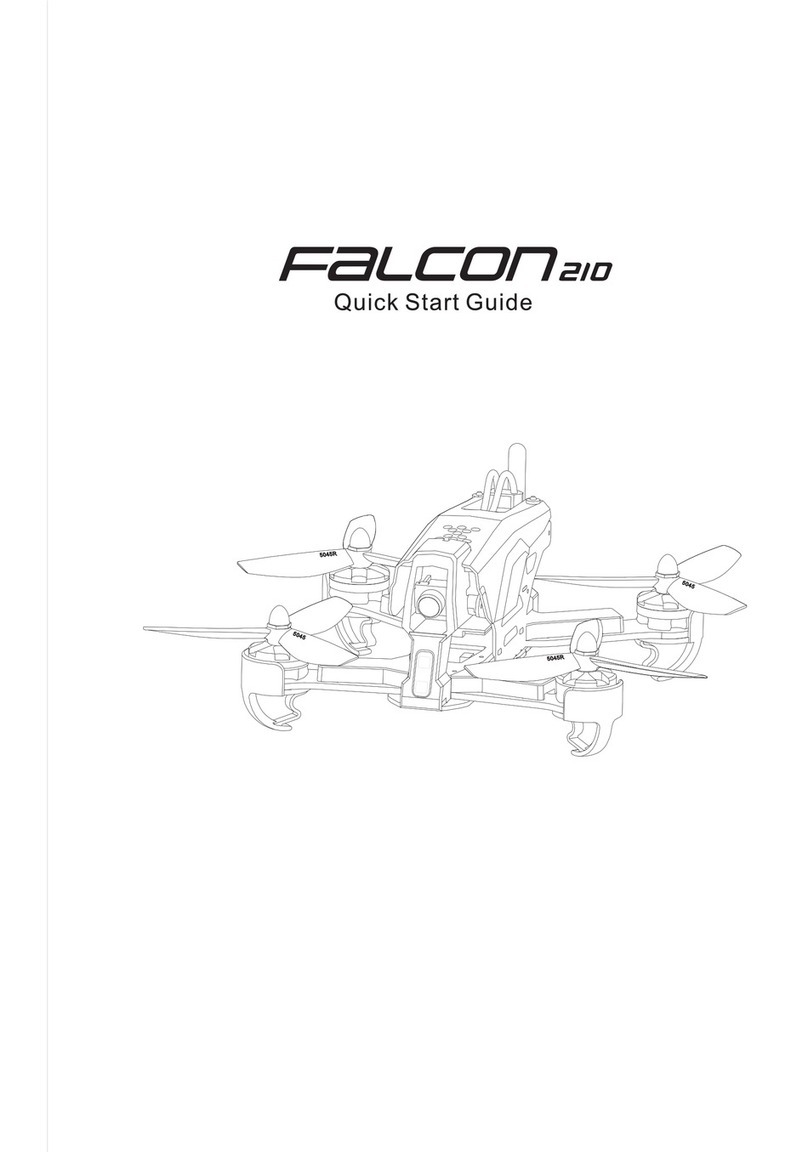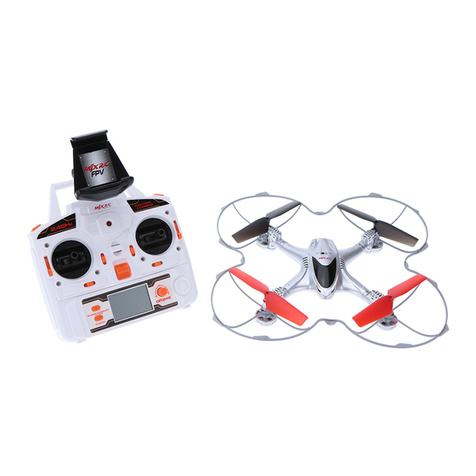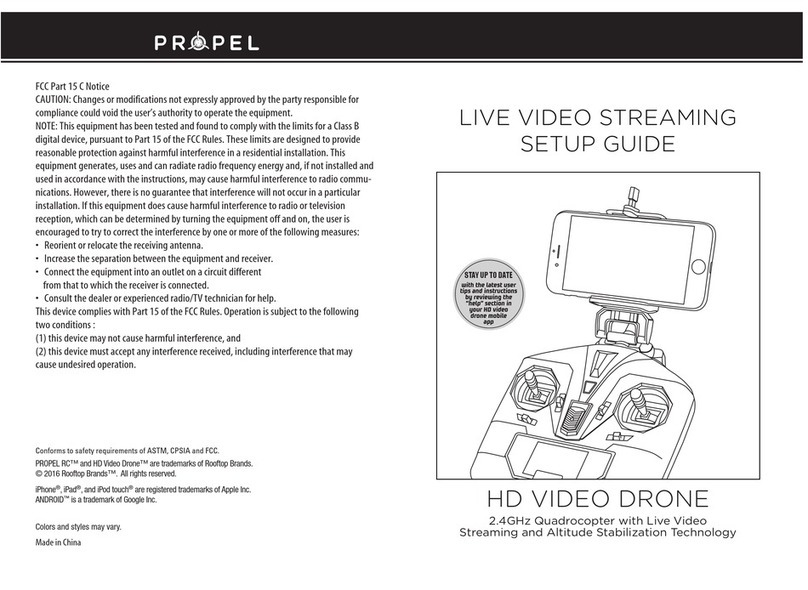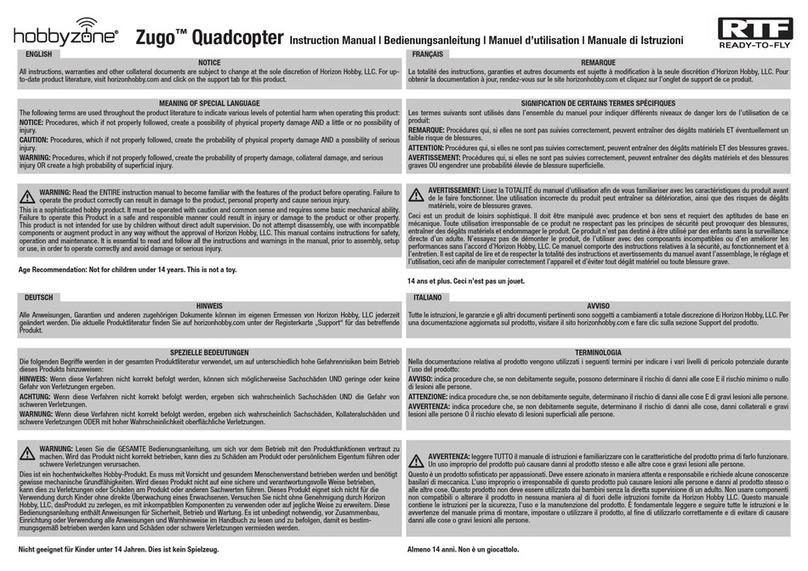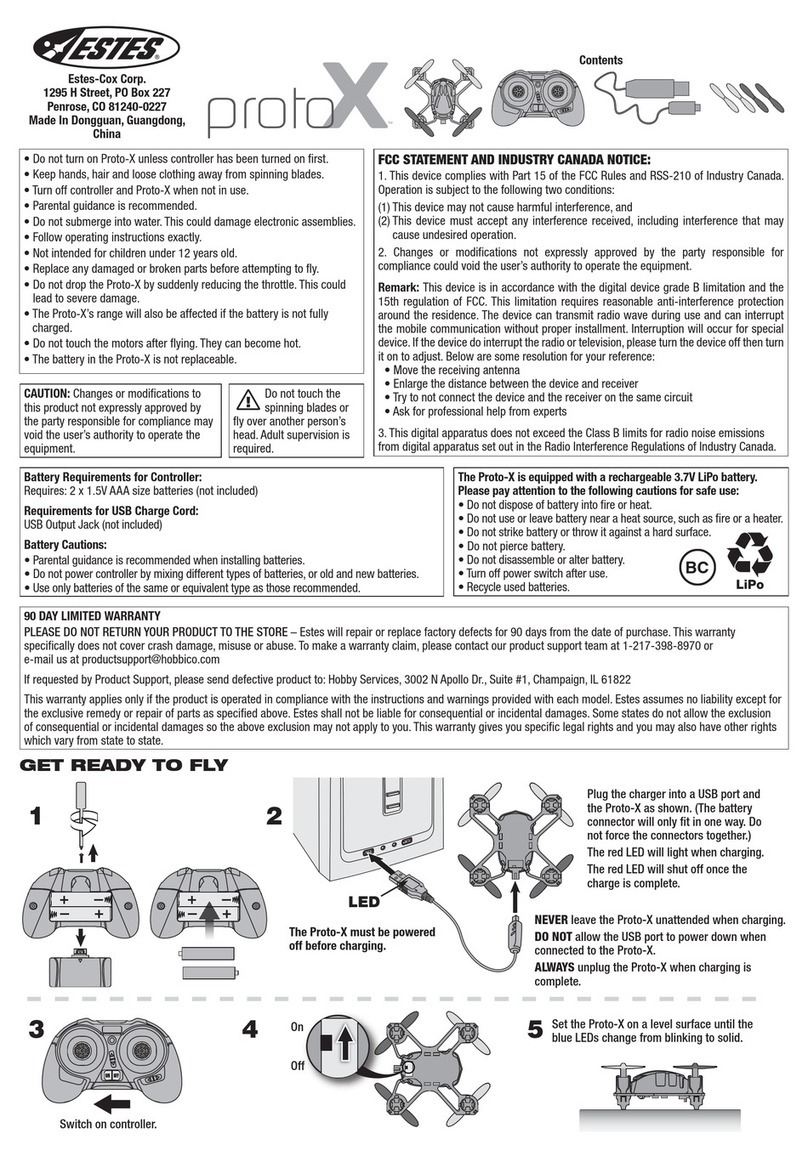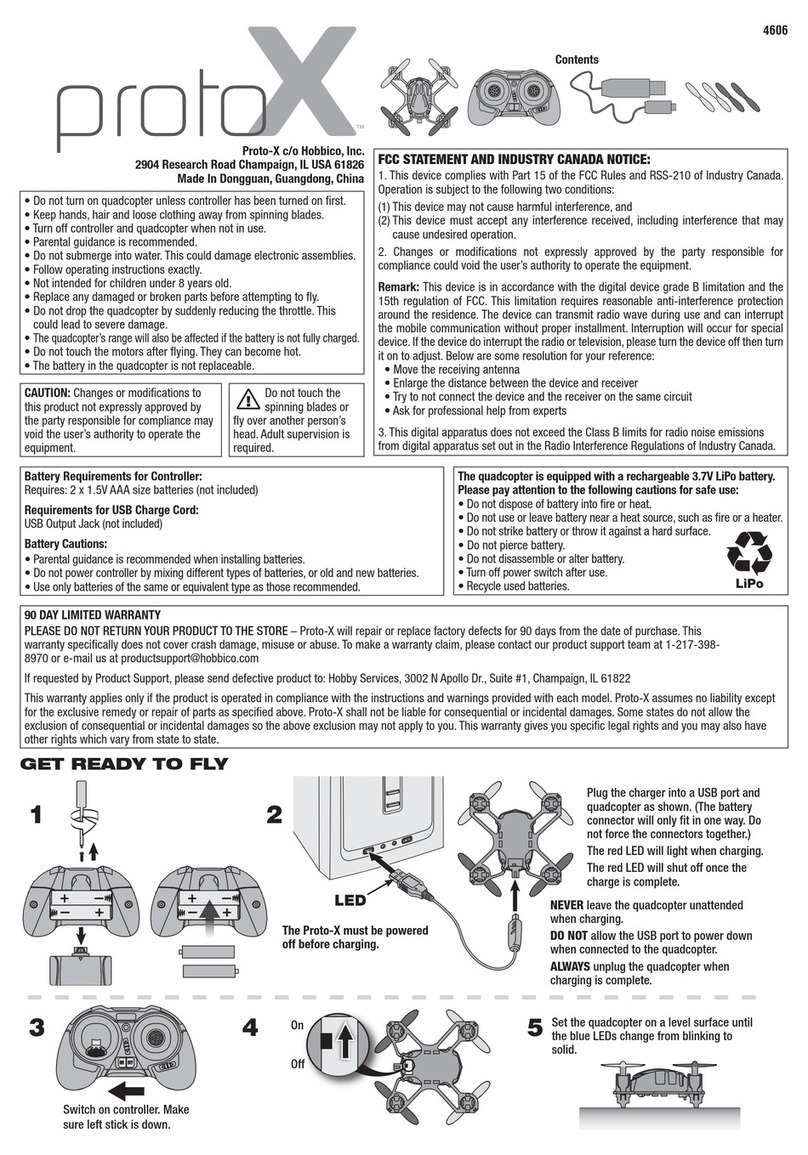
EN
7
Specications
●Aircraft
Weight (Including Battery) 1236 g
Max Ascent Speed 5 m/s
Max Descent Speed 3 m/s
Max Speed 16 m/s (Atti mode, no wind)
Max Service Ceiling Above Sea
Level 19685 feet (6000 m)
(Software altitude limit: 400 feet above takeoff point)
Max Flight Time Approximately 25 minutes
Operating Temperature Range 32° to 104° F (0° to 40° C)
GNSS GPS+GLONASS
Operating Frequency 2.400-2.4835 GHz; 5.725-5.850 GHz
Transmitter Power (EIRP) 2.4 GHz: ≤27 dBm (FCC); ≤20 dBm (SRRC); ≤20 dBm (CE)
5.8 GHz: ≤30 dBm (FCC); ≤26 dBm (SRRC); ≤14 dBm (CE)
●Gimbal
Controllable Range Pitch: -90° to +30°
●Vision System
Velocity Range <8 m/s (Altitude 2 m)
Altitude Range 30 to 300 cm
Operating Range 50 to 300 cm
Operating Environment Surface with clear pattern and adequate lighting (Lux > 15)
●Camera
Sensor 1/2.3” CMOS Effective pixels:12 M
Lens FOV (Field Of View) 94° 20 mm (35 mm format equivalent) f/2.8 Focus at - ∞
ISO Range 100-3200 (video) 100-1600 (photo)
Electronic Shutter Speed 8 to 1/8000 s
Image Max Size 4000×3000
Still Photography Modes Single shot
Burst shooting: 3/5/7 frames
Auto Exposure Bracketing (AEB): 3/5 bracketed frames at 0.7EV Bias
Interval shot
Video Recording Modes C4K: 4096×2160 24/25p
4K: 3840×2160 24/25/30p
2.7K: 2704×1520 24/25/30p
FHD: 1920×1080 24/25/30/48/50/60p
HD: 1280×720 24/25/30/48/50/60p
Max Bitrate of Video Storage 60 Mbps
Supported File Systems FAT32 (≤ 32 GB); exFAT (> 32 GB)
Photo Formats JPEG, DNG
Video Formats MP4/MOV (MPEG-4 AVC/H.264)
Supported SD Card Types Micro SD, Max capacity: 64GB. Class 10 or UHS-1 rating required
Operating Temperature Range 32° to 104° F (0° to 40° C)
●Remote Controller
Operating Frequency 2.400 GHz – 2.4835 GHz, 5.725 GHz - 5.850 GHz
Transmitter Power (EIRP) 2.4 GHz: ≤27 dBm (FCC); ≤20 dBm (SRRC); ≤20 dBm (CE)
5.8 GHz: ≤30 dBm (FCC); ≤26 dBm (SRRC); ≤14 dBm (CE)
Max Transmission Distance 2.4 GHz: 0.6 mi (1000 m, FCC); 0.3 mi (500 m, SRRC); 0.3 mi (500 m, CE)
5.8 GHz: 2.5 mi (4000 m, FCC); 1.9 mi (3000 m, SRRC); 0.2 mi (400 m, CE) Unobstructed and free of interference
Operating Temperature Range 32° to 104° F (0° to 40° C)
Battery 2,600 mAh LiPo 18650
Mobile Device Holder Tablets and smartphones
●Charger
Voltage 17.4 V
Rated Power 57 W
●Intelligent Flight Battery (PH3-4480 mAh-15.2 V)
Capacity 4480 mAh
Voltage 15.2 V
Battery Type LiPo 4S
Energy 68 Wh
Net Weight 365 g
Charging Temperature Range 41° to 104° F (5° to 40° C)
Max Charging Power 100 W
Designed by DJI. Printed in China.
For more information, read the User Manual:
http://www.dji.com/phantom-3-se
※This content is subject to change without prior notice.
PHANTOM and DJI are trademarks of DJI.
Copyright © 2017 DJI All Rights Reserved.
2
8
9
.
5 mm
289 mm
185 mm
1
8
4 mm
1
7
5 m
m
122.8 mm
